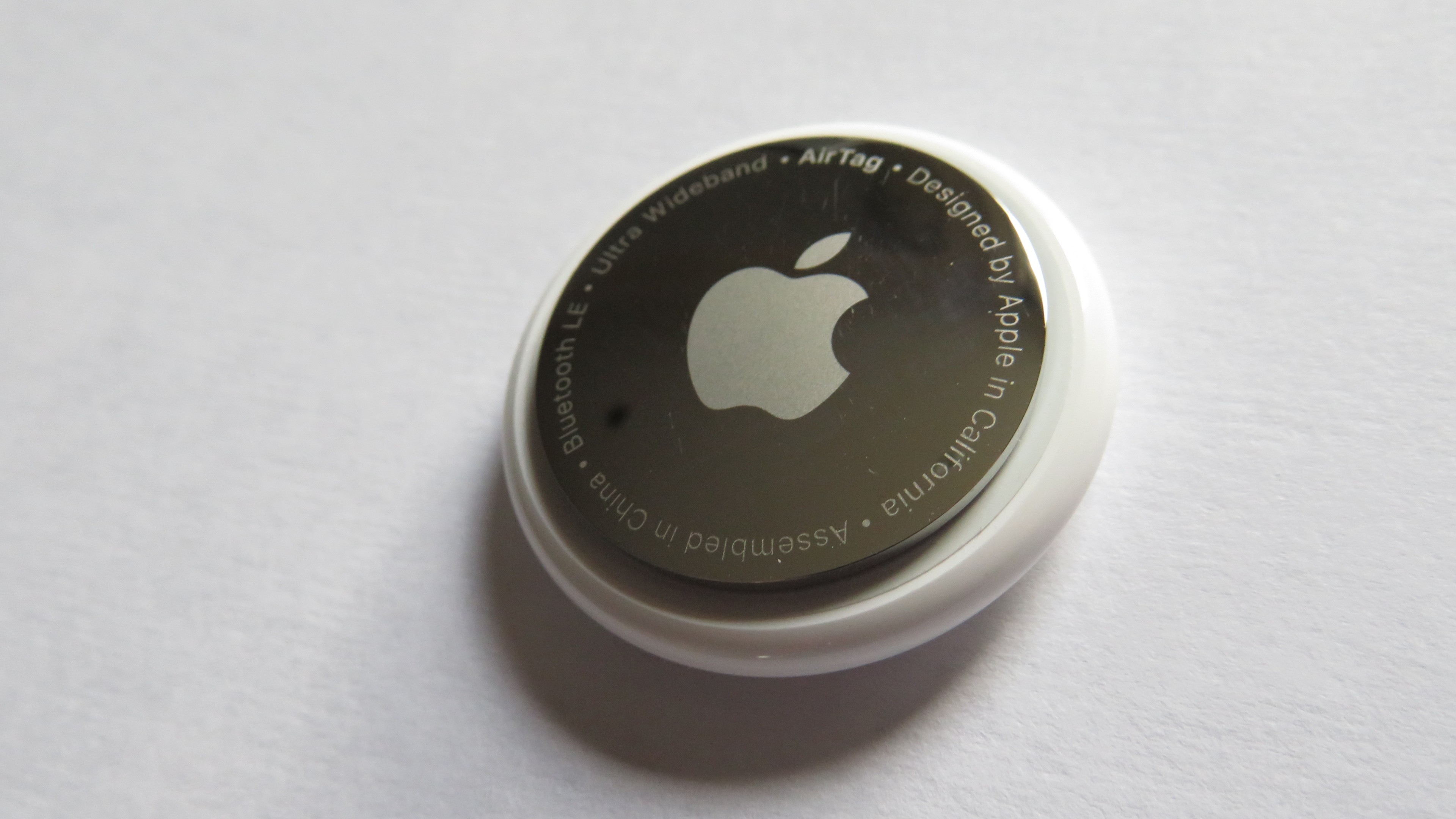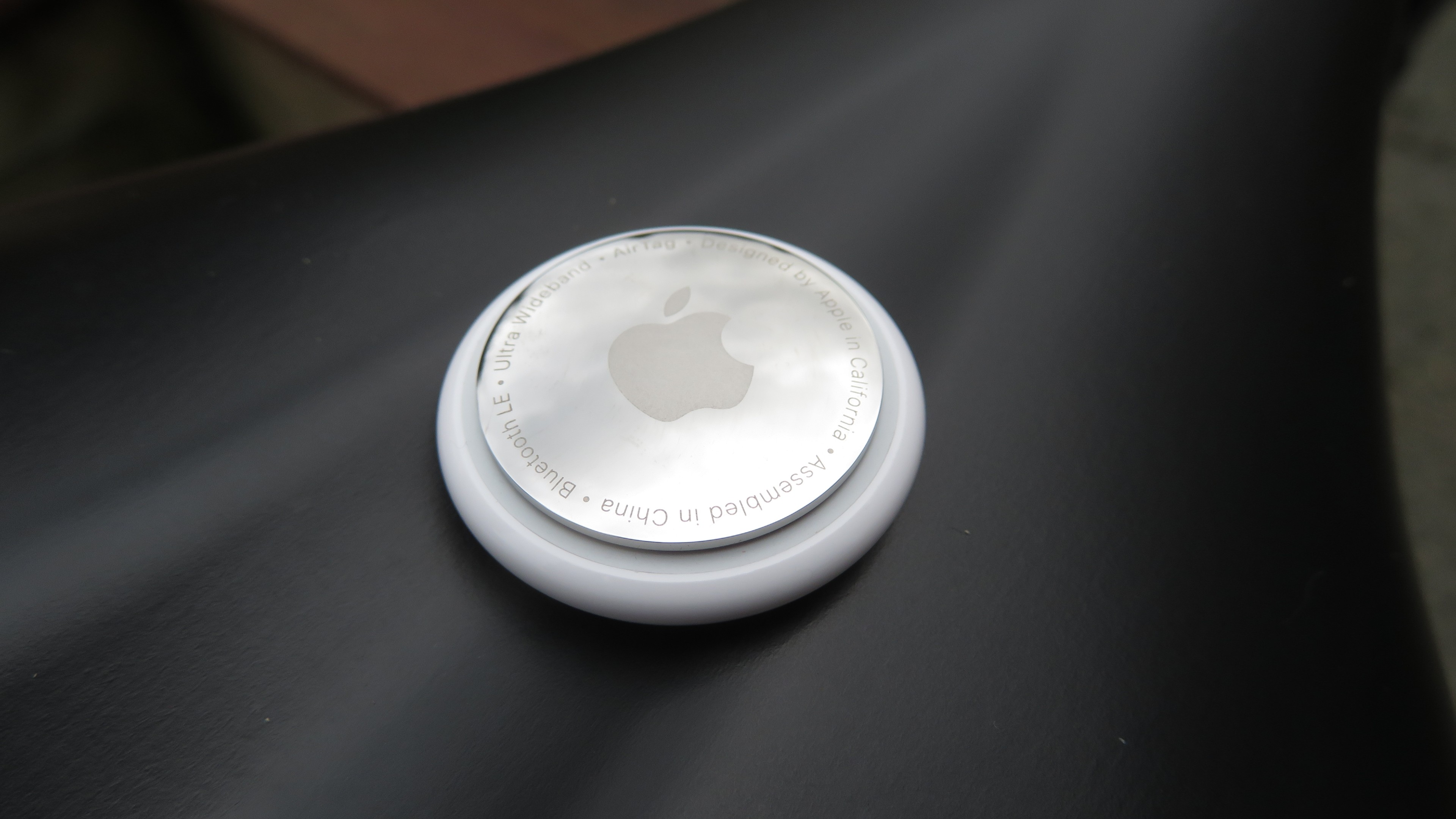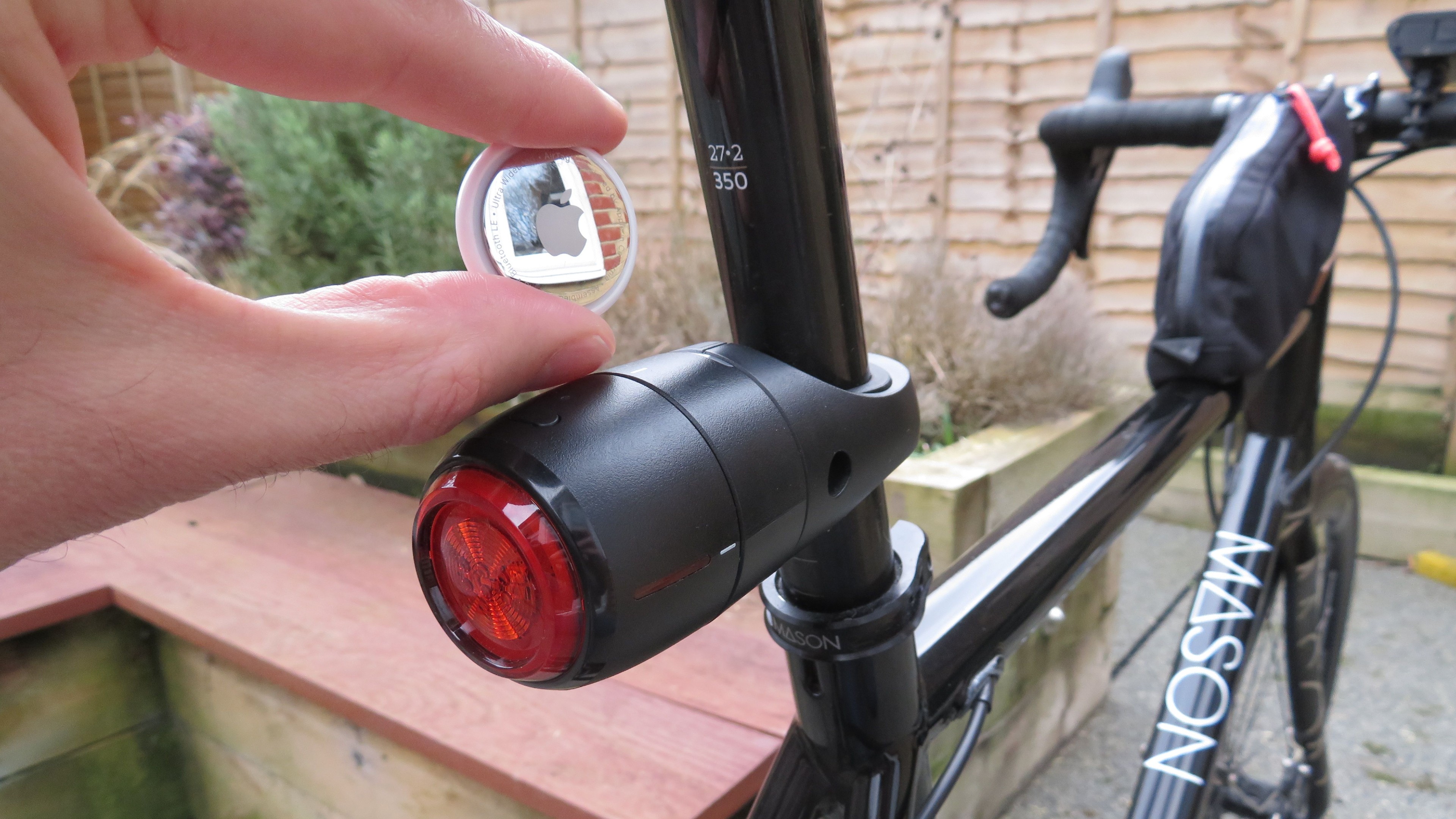Apple AirTag review
Is the Apple AirTag the affordable answer to reliable theft prevention?

The Apple AirTag is affordable and provides reasonably effective security, however, it does rely upon proximity to Apple devices, so traditional GPS trackers may be more successful in remote areas.
-
+
Huge number of Apple provides a big network to tap into
-
+
A wide range of third-party bike mounts are available
-
+
Inexpensive compared with a GPS tracker
-
-
Relies on Apple devices, less likely to work in remote areas
-
-
Needs a recent iPhone to get the best from the app
-
-
AirTag could accidentally alert a thief to its presence
You can trust Cycling Weekly.
The AirTag is Apple's answer to Tile and other small trackers. Always losing your keys? Fit an AirTag. Wallet gone walkabout? An AirTag should help you find it. And while this sort of everyday use is what the AirTag is all about, it can work as security tracker for your bike too.
Like Tile tags, the Apple AirTag uses Bluetooth to connect to your phone. So long as the AirTag is within range of your phone, tap on the 'Find My' app and the AirTag's location shows on the screen. Meanwhile, the device makes a cheerful beep to tell you that, once again, your keys have fallen down the back of the sofa. If you are running an iPhone 11 or later, then the 'Precision Finding' feature goes further, showing the distance and direction of the AirTag on screen.
Bluetooth enables devices, such as the Apple AirTag, can provide a cost effective alternative to GPS trackers, which are purpose designed to combat bike theft - wither setting off an alarm when moved, or providing location tracking.
Apple AirTag as an anti theft device: benefits and limitations

You'll need to find an adapter to fit the AppleAir Tag to your bike
Clearly, a bicycle is tougher to lose than your house keys, and a bike thief is unlikely to be sporting enough to stash your bike within Bluetooth range of your mobile. However, any Apple device can act as a beacon. Turn on Lost Mode in the 'Find My' app and you will get an alert as soon as the AirTag is found by any Apple product.
Unlike some rival trackers that come in different shapes and sizes to suit different uses, there's just one AirTag. It's a small, button-like disc, just over three centimetres across. It doesn't have a hole to thread a key ring through, and doesn't come with any other fixings – you'll need to buy these separately. Apple produces its own range of accessories, but if you want a bike mount you'll need one from a third-party.
Apple claims a battery life of around a year, and the CR2032 battery can be replaced by the user, something you can't say of most Apple products...
The AirTag has come in for some bad publicity as a means of stalkers keeping tabs on somebody, which is rather sinister but does show the technology works. At Cycling Weekly, we've heard of the AirTag being successfully used for the more noble purpose of reuniting a cyclist and their bike(s).
David Wilkins recovered three bikes just hours after they had been stolen. The AirTag fitted to one of the bikes gave him their location. The police told him the location wasn't specific enough to take action, but after driving to the housing estate where the AirTag was located he was able to give the police a specific address.
"To think that a tag found £15,000 worth of bikes... it's a pretty decent investment! They might not work all of the time, but for me they worked brilliantly," says Wilkins.
The "might not work all the time" comment is important. If an Apple user is closeby the AirTag, you could find your missing bike quickly. But if the thief is an Android fan and they stash your bike somewhere remote, it may not be close enough to an Apple device to send its whereabouts.
There is another possible scenario. To alert honest people if they have accidentally picked up someone else's property, any iPhone should notice an unfamiliar AirTag that's out of range of its owner, and send the user an alert. On the face of it this is a great feature if someone accidentally picks up the wrong coat. However, it could alert an iPhone-owning thief to the presence of the tracking device.
Apple AirTag on test

Apple AirTag is tiny vs the likes of Vodafone's GPS tracking rear light
To get a firsthand idea of the AirTag's strengths and limitations, I 'stole' my own bike, and took it to various locations.
Back home, my bored but bribable daughter was on the phone, checking in at ten-minute intervals to see if she could find where I was hiding. We tested a Tile and the Vodafone Curve bike light/GPS at the same time.
The first location was a residential street. The AirTag still showed the bike was still at home. We had better luck at the second location in a nearby park, with the AirTag being within a hundred yards or so of the bike's true location. The third location was outside a Post Office on a busy high street, and the AirTag was spot on. However, when I moved on to a car park ten minutes later the AirTag still showed the bike at the Post Office, and after a few more minutes when I was stood outside a school the AirTag couldn't find the bike at all.
I have compared the Apple AirTag's performance to other similar devices (reviews from those coming soon). To put the AirTag's results in context, the Tile tracker only gave a location once, somewhere I had walked through on my way to the Post Office but several hundred yards away. The Vodafone GPS bike light device found the exact location twice, but struggled once in among buildings.
Apple AirTag: value and conclusions
Given that the Airtag costs £29/$29 and the Vodafone Curve bike light costs £79/$110 and requires a subscription, that suggests the Airtag is a decent budget security upgrade. It's not infallible, and could accidentally warn a thief that you have a tracker. But for the price of a decent bike lock it's a worthwhile security upgrade.
Bike trackers: FAQ
Can I put an anti theft tracker on my bike?
What styles of tracker are available?
There are several available styles of anti-theft tracker. The Apple AirTag uses Bluetooth, and relies upon an Apple user being within close proximity of the device. More exepensive options use GPS tracking - this is more effective in remote areas, however, still relies upon the GPS network covering the location of your missing steed.
Where should I mount a GPS tracker to my bike?
What position is best for a GPS tracker?
The best location for a GPS tracker is one where it won't be found. Some come with fixings designed to 'blend in' with the bike, they may look like a standard bike light or bottle cage attachment, which will work provided the thief isn't aware of the brand. Others can be hidden inside the frame, such as in the seat tube.

Thank you for reading 20 articles this month* Join now for unlimited access
Enjoy your first month for just £1 / $1 / €1
*Read 5 free articles per month without a subscription

Join now for unlimited access
Try first month for just £1 / $1 / €1
Get The Leadout Newsletter
The latest race content, interviews, features, reviews and expert buying guides, direct to your inbox!
David Motton is a freelance journalist and presenter specialising in motoring and cycling. David's cycling reviews, features and news stories have been published in Cycling Plus, Pro Cycling, Bikeradar.com and in mainstream newspapers such as The Sunday Times and The Telegraph. As a motoring journalist, he has contributed to Autocar, WhatCar?, Practical Caravan and more.
-
 A bike rack with an app? Wahoo’s latest, and a hub silencer – Sea Otter Classic tech highlights, Part 2
A bike rack with an app? Wahoo’s latest, and a hub silencer – Sea Otter Classic tech highlights, Part 2A few standout pieces of gear from North America's biggest bike gathering
By Anne-Marije Rook Published
-
 Cycling's riders need more protection from mindless 'fans' at races to avoid another Mathieu van der Poel Paris-Roubaix bottle incident
Cycling's riders need more protection from mindless 'fans' at races to avoid another Mathieu van der Poel Paris-Roubaix bottle incidentCycling's authorities must do everything within their power to prevent spectators from assaulting riders
By Tom Thewlis Published
-
 Man hands himself in to Belgian police after throwing full water bottle at Mathieu van der Poel during Paris-Roubaix
Man hands himself in to Belgian police after throwing full water bottle at Mathieu van der Poel during Paris-Roubaix30-year-old was on Templeuve-en-Pévèle cobbled sector when television pictures showed the bottle hitting him in the face
By Tom Thewlis Published